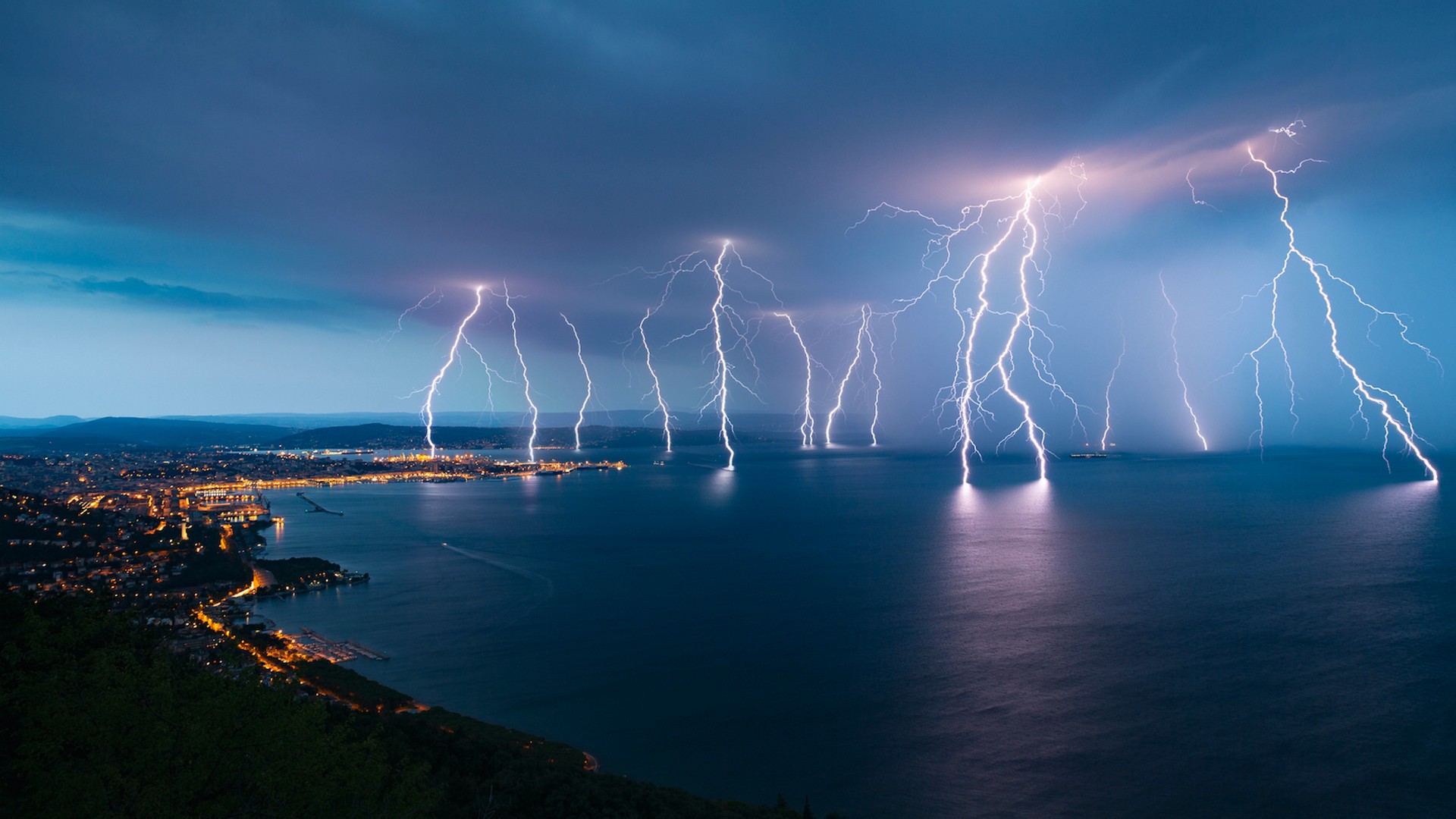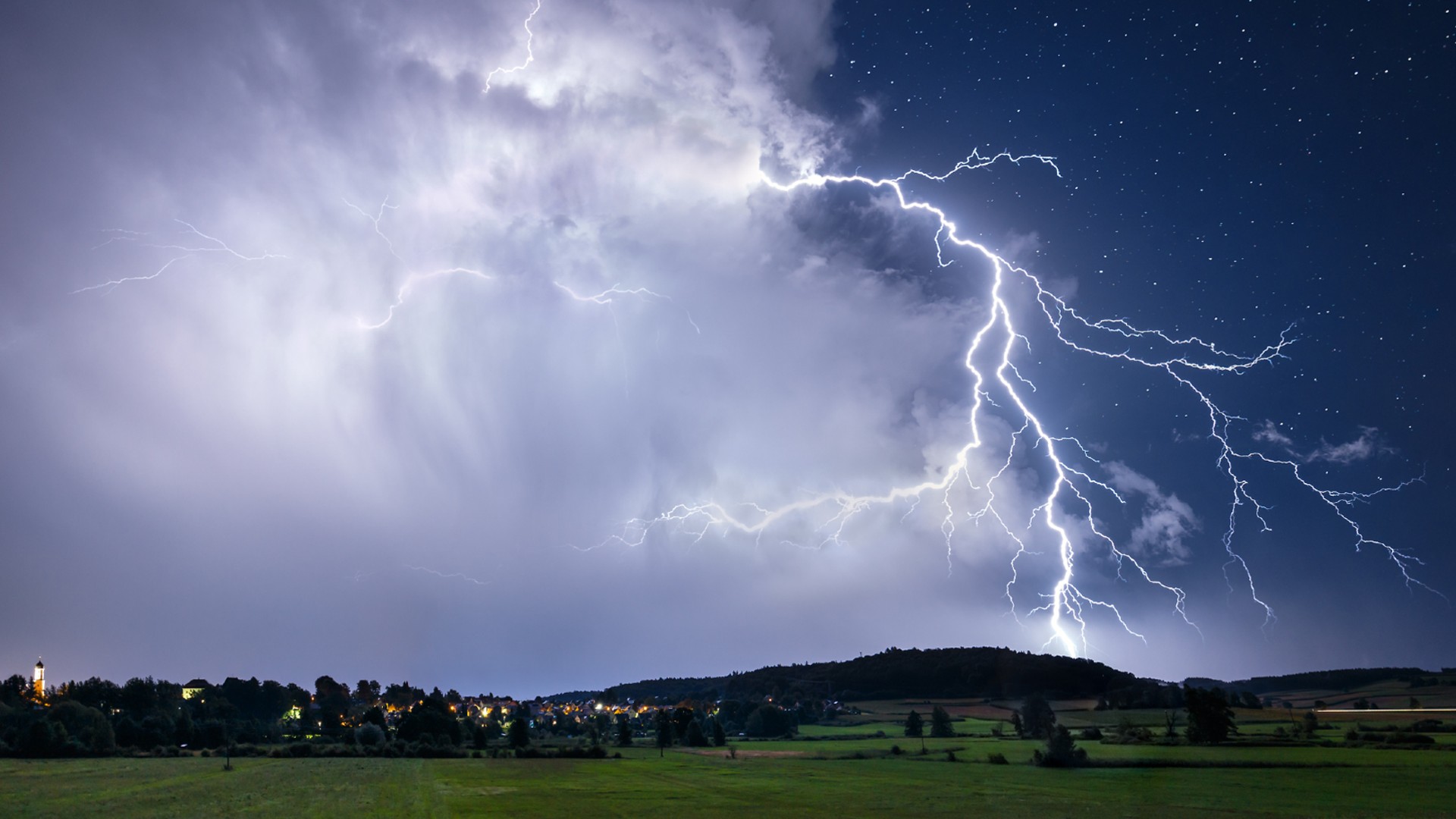
Why does lightning zigzag?
The characteristic zigzag pattern of lightning is caused by a highly conductive form of oxygen that builds up as the bolt travels toward the ground.

Lightning can light up the sky in a bright flash and take on a variety of shapes, but if you were to draw it, you'd almost certainly scratch out a zigzag. But what gives thunderbolts this branch-like shape? Why does lightning zigzag across the sky, instead of discharging in a straight line between a thundercloud and the ground?
Many of the mechanisms of lightning remain a mystery, although researchers are starting to untangle the reason behind lightning's crookedness. "We know all about most things on Earth — scientists can predict [lunar and solar] eclipses to within a fraction of a second," John Lowke, a physicist at the University of South Australia and lead author of a study investigating lightning's "stepped pattern," told Live Science. "But there are still big mysteries about common old lightning."
In the study, study published in December 2022 in the Journal of Physics D: Applied Physics, Lowke and colleagues suggest that the characteristic zigzag pattern of lightning is caused by a highly conducting form of oxygen that builds up irregularly as the bolt travels toward the ground, sometimes over great distances.
Related: What's the longest lightning bolt ever recorded?

Extremely fast photographs of lightning show that a lightning bolt is preceded by "leaders" of ionized (electrically charged) air that branch out from the bottom of a thundercloud, he said. In most cases, these leaders are too faint to be seen with the naked eye.
It's these leaders, not the final lightning bolt, that form the stepped pattern, Lowke said.
Air usually acts as an insulator, but the leaders create regions with high concentrations of a special form of highly conducting oxygen called "singlet delta oxygen" — that is, oxygen molecules with a lower-than-normal energy state.
Sign up for the Live Science daily newsletter now
Get the world’s most fascinating discoveries delivered straight to your inbox.
Each "zig" (or "zag") of a leader — a "step" which is about 165 feet (50 meters) long — is caused by electric charge discharging across such a region, Lowke said.
The powerful magnetic fields from the last step almost instantaneously create additional singlet delta oxygen molecules from the regular oxygen molecules in the atmosphere, and concentrations of this highly conductive oxygen can branch out in all directions from where the step ends, he explained.
The leader discharges across successive steps in about a millionth of a second, each followed by a fleeting "dark" period where the photographs show no visible discharge at all, and finally hits the ground or a tall object connected to it. That impact results in the visible (and very loud) "return stroke" of the lightning bolt for about one-thousandth of a second, traveling back along the zigzag path of the highly conducting singlet delta oxygen, he said. The other leaders lose their charge at this point and disappear.
A better understanding of how lightning works can help structures and people survive thunderstorms, Lowke said. For example, it may inform the placement of lightning rods on tall objects such as buildings, radio masts and ship superstructures.
Among the lingering questions about lightning are what causes it. Although scientists now assume that lightning is static electricity created by the motion of ice particles in thunderclouds, that isn't known for sure, Lowke said.
"It's an amazingly interesting subject," he said. "The mysteries have not been recognized and are not known by the general public."
Tom Metcalfe is a freelance journalist and regular Live Science contributor who is based in London in the United Kingdom. Tom writes mainly about science, space, archaeology, the Earth and the oceans. He has also written for the BBC, NBC News, National Geographic, Scientific American, Air & Space, and many others.









